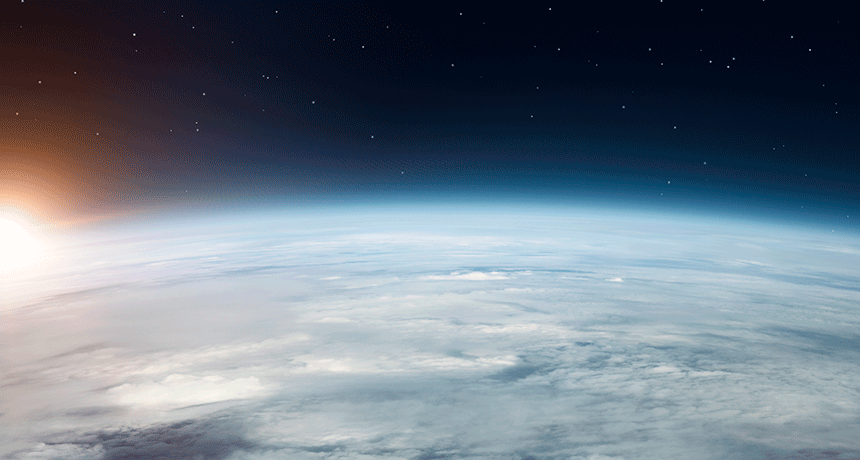atmosphere The envelope of gases surrounding Earth or another planet.
atom The basic unit of a chemical element. Atoms are made up of a dense nucleus that contains positively charged protons and uncharged neutrons. The nucleus is orbited by a cloud of negatively charged electrons.
chemical A substance formed from two or more atoms that unite (bond) in a fixed proportion and structure. For example, water is a chemical made when two hydrogen atoms bond to one oxygen atom. Its chemical formula is H2O. Chemical also can be an adjective to describe properties of materials that are the result of various reactions between different compounds.
lightning A flash of light triggered by the discharge of electricity that occurs between clouds or between a cloud and something on Earth’s surface. The electrical current can cause a flash heating of the air, which can create a sharp crack of thunder.
molecule An electrically neutral group of atoms that represents the smallest possible amount of a chemical compound. Molecules can be made of single types of atoms or of different types. For example, the oxygen in the air is made of two oxygen atoms (O2), but water is made of two hydrogen atoms and one oxygen atom (H2O).
nitrogen oxides Pollutants made up of nitrogen and oxygen that form when fossil fuels are burned. The scientific symbol for these chemicals is NOx (pronounced “knocks”). The principle ones are nitric oxide (NO) and nitrous oxide (NO2).
organism Any living thing, from elephants and plants to bacteria and other types of single-celled life.
oxygen A gas that makes up about 21 percent of Earth's atmosphere. All animals and many microorganisms need oxygen to fuel their growth (and metabolism).
ozone A colorless gas that forms high in the atmosphere and at ground level. When it forms at Earth’s surface, ozone is a pollutant that irritates eyes and lungs. It is also a major ingredient of smog.
ozone layer A layer in Earth’s stratosphere. It contains a lot of ozone, which helps block much of the sun’s biologically damaging ultraviolet radiation.
pollutant A substance that taints something — such as the air, water, our bodies or products. Some pollutants are chemicals, such as pesticides. Others may be radiation, including excess heat or light. Even weeds and other invasive species can be considered a type of biological pollution.
radiation (in physics) One of the three major ways that energy is transferred. (The other two are conduction and convection.) In radiation, electromagnetic waves carry energy from one place to another. Unlike conduction and convection, which need material to help transfer the energy, radiation can transfer energy across empty space.
smog A kind of pollution that develops when chemicals react in the air. The word comes from a blend of “smoke” and “fog,” and was coined to describe pollution from burning fossil fuels on cold, damp days. Another kind of smog, which usually looks brown, develops when pollutants from cars react with sunlight in the atmosphere on hot days.
stratosphere The second layer of the Earth’s atmosphere, just above the troposphere, or ground layer. The stratosphere stretches from 10 kilometers to 50 kilometers (about 6.2 to 31 miles) above sea level.
sun The star at the center of Earth’s solar system. It’s an average size star about 26,000 light-years from the center of the Milky Way galaxy. Also a term for any sunlike star.
tissue Made of cells, any of the distinct types of materials that make up animals, plants or fungi. Cells within a tissue work as a unit to perform a particular function in living organisms. Different organs of the human body, for instance, often are made from many different types of tissues.
ultraviolet A portion of the light spectrum that is close to violet but invisible to the human eye.
ultraviolet light A type of electromagnetic radiation with a wavelength from 10 nanometers to 380 nanometers. The wavelengths are shorter than that of visible light but longer than X-rays.

